Archive for May, 2016
May 27th, 2016 by dave dorsey

Oh, snap: “That dull Merchant-Ivory movie ‘Surviving Picasso’ has been much criticized for showing, for legal reasons, only ‘faked’ paintings of Picasso’s work in the forties and fifties, but no one has had quite the courage to say that it’s hard to tell them from the real ones, except that Picasso’s real ones of the time were even worse.”
–Adam Gopnik, “Escaping Picasso,” 1996, The New Yorker
May 25th, 2016 by dave dorsey
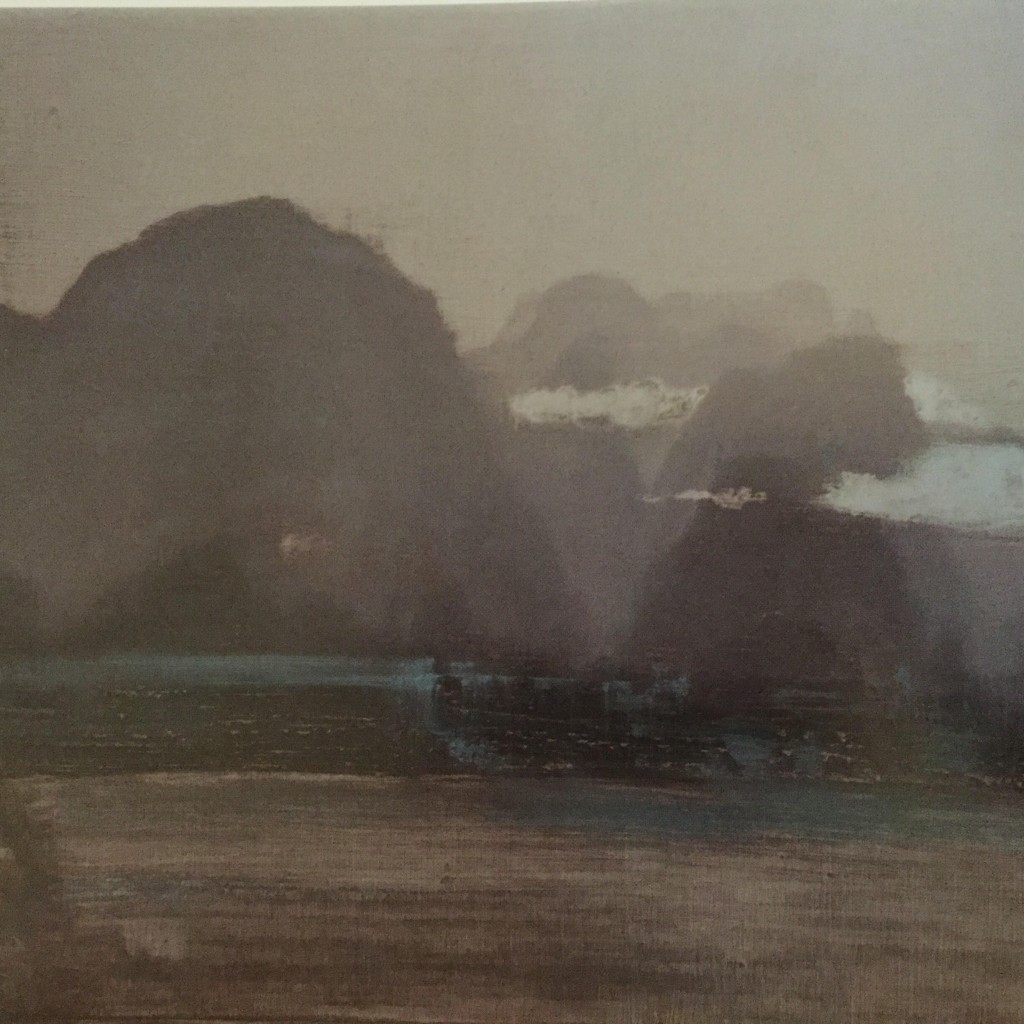
Mountains-Cloud-Haze, David Smith, Hong Kong, 12″ x 15″ oil on plywood
I’m happily painting every day again, to the neglect of other things, such as writing about painting. But I want to pass along a series of examples from the INPA 5, the latest international painting annual from Manifest Gallery. This detail, slightly cropped at the right edge, is of a painting done by David Smith, one of my favorite artists who exhibits regularly at Manifest in Cincinnati. He combines the subject and feel of classic Chinese scroll painting–misty camel-hump mountains–in a contemporary mode. Instead of water-based paint on paper, he’s using oil on plywood, and the integral role of the brushwork in traditional Chinese painting here has a gestural quality that reminds me of Richter’s abstraction. And yet it works perfectly to evoke nearly the same kind of world a Song dynasty painter-poet would have evoked. Would love to know more about Smith, how and why he paints in Hong Kong, and if he was born there or is an expatriate.
May 20th, 2016 by dave dorsey
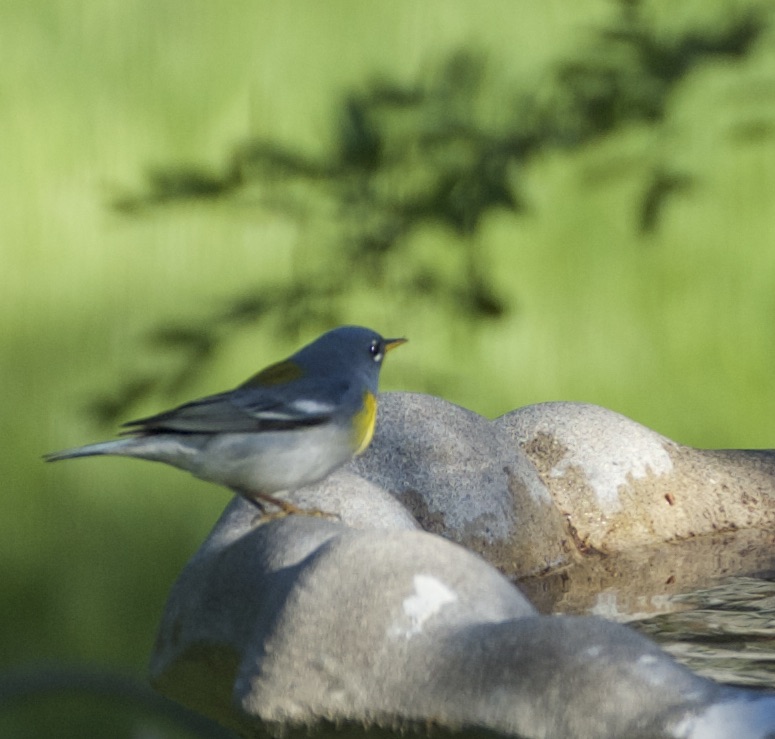
Northern Parula
I’ve been talking with some other artists lately about the motivation to make art–and how easy it can be to lose the intrinsic urge to make it by focusing on it as a means rather than an end. If you aren’t selling anything at the moment, or no one seems to be paying much attention, then it’s tempting to go outside and, say, plant some vegetables rather than struggle with a resistant picture. Art is hard work, but I do it mostly because it’s so pleasurable to finish a painting, and sometimes even more so if the image played hard to get. It’s easy to drift away from that zone where the effort is both constraining but also feels good, the reward of pushing back against a challenge, with the sequence of the hundreds of interim completions along the way toward being done. When it’s most frustrating, it’s easy to dismiss what Keats said about poetry: “If Poetry comes not as naturally as Leaves to a tree it had better not come at all.” But I doubt that he meant all good creative work has to be a first draft: Kerouac, non-stop with his long scroll of paper, or Edwin Dickinson with his premier coup work. I think what he meant was that the urge to create something comes naturally, and that’s why people do it, with no other purpose in mind. It’s an end in itself: which is what the “fine” in fine art really means, fin, the end.
I had coffee yesterday with a young artist, Adam LaPorta, who also sells Piction software to art museums. He sat down with me, Bill Stephens and Bill Santelli, for a casual conversation about how technology has changed MORE
May 17th, 2016 by dave dorsey
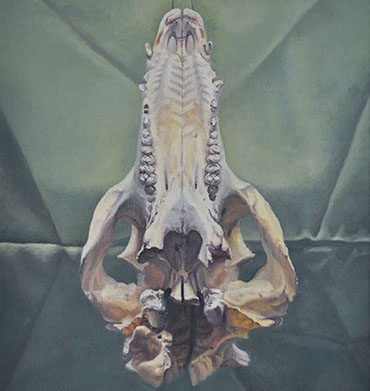
Heart of the Matter, Jean Stephens, oil on canvas, 12″ x 16″
An interesting two-artist show opens this week at Patricia O’Keefe Ross Art Gallery at St. John Fisher College, with a reception Thursday evening. Entitled “Where Two Women and Nature Converge” it features new work from Jean K. Stephens and Raphaela McCormack. I’m familiar with Jean’s work from exhibitions at Oxford Gallery, and have always loved her nests and the less frequent skulls she does. This show also features images based on still lifes she has assembled from various materials–natural and human–many of them in the shape of female figures. McCormack assembles sturdy-looking but delicate urns, vessels and images of sailing ships from natural materials. Both artists honor the physical qualities of the materials they gather and shape in the process of creating an image that has human resonance–without obscuring the actual nature of what you’re seeing.
May 12th, 2016 by dave dorsey
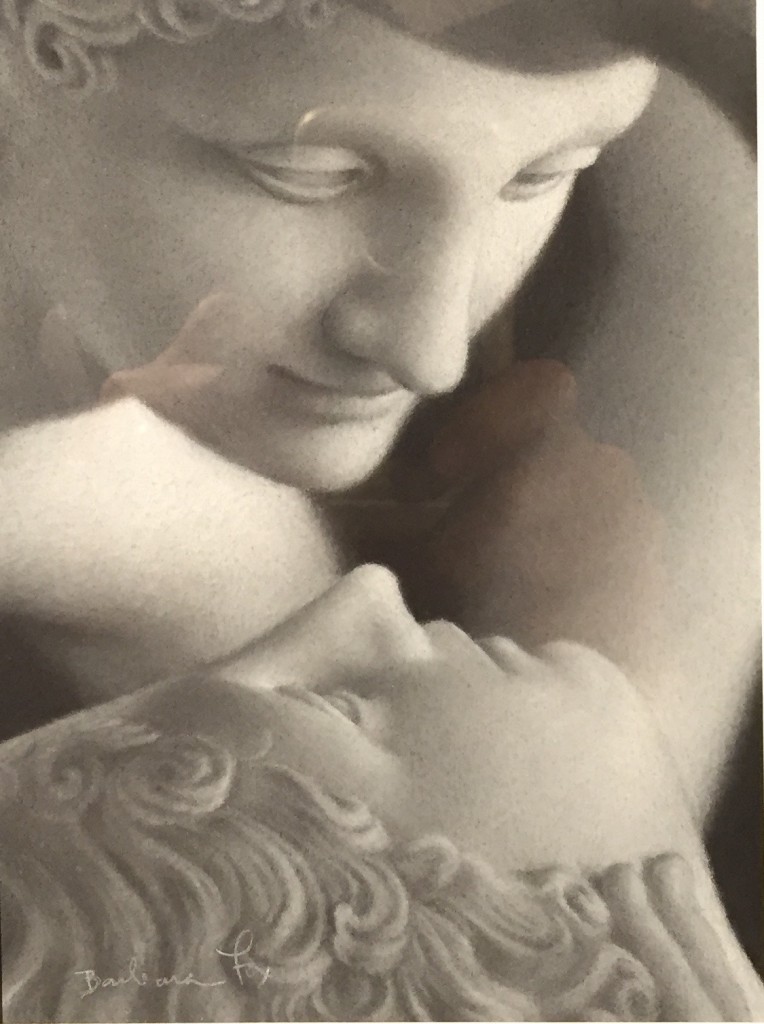
Cupid and Psyche, charcoal on paper, Barbara Fox
On the heels of my visit to New York to see contemporary interpretations of Medusa and Pandora at Danese Corey, I recently toured Oxford Gallery’s Myth’s and Mythologies. The invitation to this themed group show went out half a year ago and the results are thought-provoking, rewarding, and occasionally stunning, built around various interpretations of mythological figures as well as modern “myths” begging to be busted—the glory of motherhood, in one case, and “trickle-down economics” in another. In other words, there’s a little something for everyone. It ranges from an astonishingly beautiful example of classical sculpture in cararra marble from Italy to a minimalist abstraction painted on a metal panel. A small figure of Daphne, carved by Dario Tazzioli at his studio in Italy, has already been sold—the highest priced piece in the exhibit. It’s easy to see why: astonishingly well done, the female figure seeming to reach up and dissolve into a filigree of roots and branches around her head so delicate that it’s hard to imagine how the sculptor did it. It’s a rare example of centuries-old artistry done by someone trained in Renaissance techniques, using the kind of marble Michelangelo used and a bow drill—reason alone to visit the show. At the other end of the spectrum is Ryan Schroeder’s “Trickle Down Economics,” a large, vigorously executed oil showing the half-demolished interior of an abandoned building, with what appears to be a sinkhole almost underfoot—overall a sardonic reflection on how one man’s ceiling is another one’s floor, economically speaking.
Most of the work relies on traditional mythology. Icarus gets a lot of attention here, as does Persephone, as well as a crew of other Greek or Roman figures: Medusa, Pluto, Neptune, Pandora, Romulus and Remus, Cupid and Psyche, and Pegasus. But the subjects are wide-ranging and the artists find clever ways to put a mythical spin MORE
May 9th, 2016 by dave dorsey
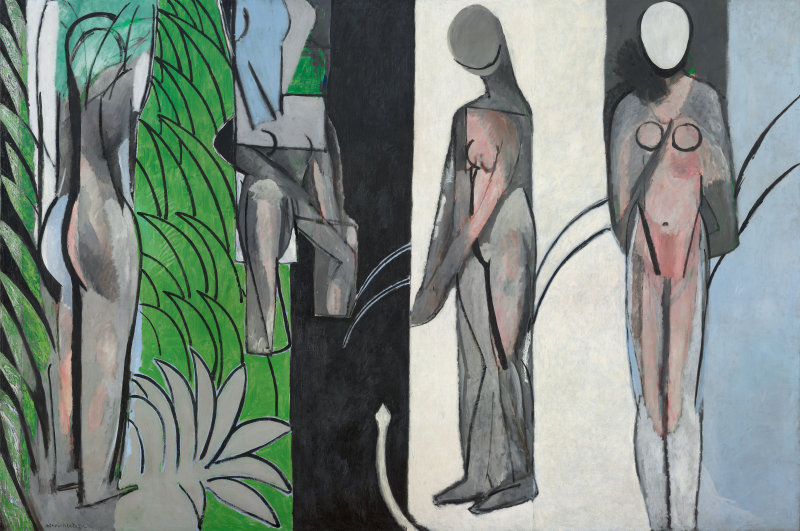
Bathers by the River, Matisse
I woke up at 1:15 a couple nights ago and couldn’t get back to sleep until around 2:30, which has been my sleep pattern for years, but while I tossed and turned, my thoughts came together on Matisse, whose work and life I’ve been studying intermittently for half a year now. It occurred to me that he knew exactly what he was doing when he wrote the famous line in 1908, a year after Picasso’s outrageous Demoiselles D’Avignon was painted, and this short passage of prose probably relegated Matisse to a back seat, in comparison to Picasso, with critics and historians ever since. (Do a search for the many biographies of Picasso and then try Matisse. Incredibly, as far as I can tell, only one biography has been written of Matisse, and it was published only a decade ago.) I came across his personal declaration of independence again yesterday reading Matisse on Art:
What I dream of is an art of balance, of purity and serenity, devoid of troubling or depressing subject matter, an art that could be for every mental worker, for the businessman as well as the man of letters, for example, a soothing, calming influence on the mind, something like a good armchair that provides relaxation from fatigue.
Imagine the derision this remark must have inspired from all quarters, and still probably does even now in the Age of Koons, especially over his “devoid of troubling or depressing subject matter.” From the point of view of those who saw art as a continuous shocking overthrow of prevailing artistic norms—modernism’s hollow legacy—this sentence sounds like blasphemy and backsliding, or worse. I think, in reality, it was a way of taking a stance against history, in a way. Matisse knew the risk he was taking, that he was setting himself at odds with the elements and theories he expected to be most celebrated in painting as it emerged in the 20th century. He asserts that he’s painting for the middle class, the businessman, the ordinary art lover, the loathed bourgeoisie—all of the people modernism was trying to outrage and unsettle and disturb. Instead, like Van Gogh, MORE
May 7th, 2016 by dave dorsey
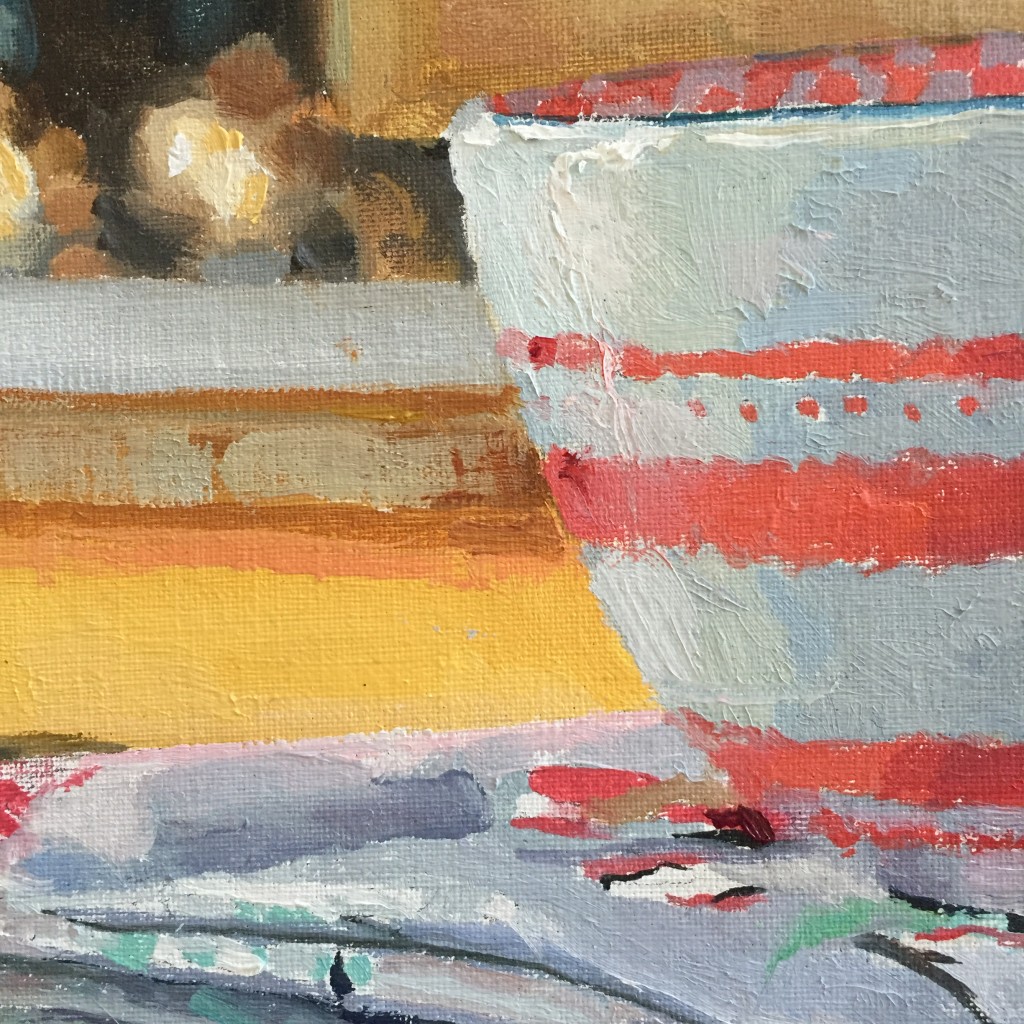
Striped Bowl in the Kitchen, detail
I’ve gotten back to a schedule of daily painting, and it makes a difference. When you get pulled away from painting for periods of time, it takes awhile to regain momentum and also to restore a sense of confidence in balancing the freedom of making intuitive, felt choices—taking chances to see what will happen—against an adherence to predictable craft, what you know paint will do from years of working with it. Which is obedience: to what you see, and what you know you need to do. If you go too far toward freedom, or you surrender completely to a routine of reliable labor, the soul of the painting slips away, or else it just becomes a mess.
So far, since I’ve been able to resume working every day, I’ve stuck to a series of smaller paintings of patterned bowls in order to focus more on the surface and the paint, less on producing an exact replica of what I see. I’m giving myself more room to improvise with color, and the way I’m setting up each still life it’s easier for me to see the flat pattern of shapes and color in an abstract way. I’m trying to increase the tension between representation and visible marks. I told Bill Santelli recently that I’m attempting to use a thicker application of paint, but afterward I realized that wasn’t entirely right: in places I’m letting bits of canvas show through, so the paint’s actually non-existent in those spots—one can’t get any thinner than that. But when I’m applying the paint, more often its consistency is closer to its original viscosity out of the tube. It’s thick where it needs to be and thin where it needs to be, that’s all, but overall a little heavier than in the past. I want the paint to be visible, as paint, as much as possible. I’m also trying to simplify the areas of color, and value, striving for the ability to depict more with less brushwork, while leaving more evidence of my hand and the brush. I’ve done all of these things in the past, intermittently, and then returned to the more finished, highly detailed realism of most work I usually sell. (I plan to alternate between both modes now.) Paintings I’ve done this way have sold, as well, so marketability isn’t the calculation I’m making. In this series, I want paintings that evoke more while specifying less, that’s all. And if I succeed, I may be able to apply what I’m learning in more and more ways.
When I was in Manhattan to see Suzie MacMurray’s show, I put in a day touring a dozen other galleries, and saw Alyssa Monks’ new paintings at Forum. She seems to be trying to break away from the photorealism she’s been known for—and it’s giving her a path toward a much more varied palette, looser application of paint, and images that are much less about the way the physical world looks and seem closer to a psychological depiction of an inner world. It’s a move away from the urge to astonish with technical skill toward something more felt and elusive and hard to pin down. Still, I wanted them to be even more abstract, looser and ambiguous—in reality they may simply be straightforward depictions of a beautiful face seen through a window that reflects a wooded tract behind the viewer. (A new take on her faces seen through water, only this time the water is still and reflective.) But her focus on color and the more painterly technique seems as if it might lead to something even more interesting. And I learned Arcadia, one of my favorite galleries, has moved to Santa Monica. I was disappointed not to be able to pay a visit, but it’s now located on the same street where my son and daughter-in-law live–which will be mighty convenient in July.
May 5th, 2016 by dave dorsey
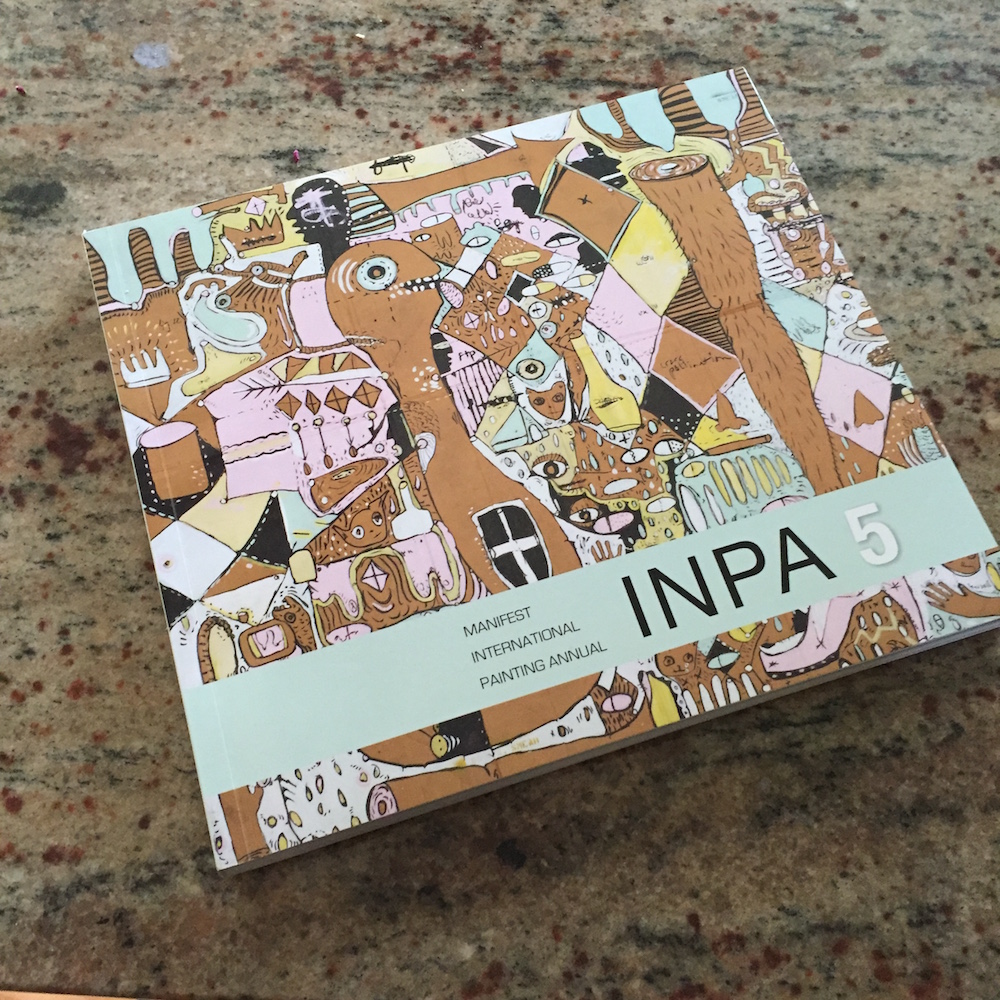 Manifest Creative Research Gallery and Drawing Center has shipped its fifth International Painting Annual, which arrived here last week. As usual, it’s full of treasures from artists who made the cut from the around the world. The gallery received 1,475 submissions: 434 artists from 44 states and 20 countries submitted to INPA 5 and out of those artists, only 69 were chosen. For a select few, Manifest choose several pieces for inclusion, offering a clear sense of that artist’s stylistic continuity from one work to the next. The honor was fully deserved in the case of the lucky few. It’s a joy to see the diversity and vitality of work, some of it technically astonishing, from painters located in places as far-flung as Hong Kong, Kentucky, Germany and Scotland. I’ll post some of the work that impressed me the most over the next couple weeks. There are some real gems.
Manifest Creative Research Gallery and Drawing Center has shipped its fifth International Painting Annual, which arrived here last week. As usual, it’s full of treasures from artists who made the cut from the around the world. The gallery received 1,475 submissions: 434 artists from 44 states and 20 countries submitted to INPA 5 and out of those artists, only 69 were chosen. For a select few, Manifest choose several pieces for inclusion, offering a clear sense of that artist’s stylistic continuity from one work to the next. The honor was fully deserved in the case of the lucky few. It’s a joy to see the diversity and vitality of work, some of it technically astonishing, from painters located in places as far-flung as Hong Kong, Kentucky, Germany and Scotland. I’ll post some of the work that impressed me the most over the next couple weeks. There are some real gems.
May 4th, 2016 by dave dorsey
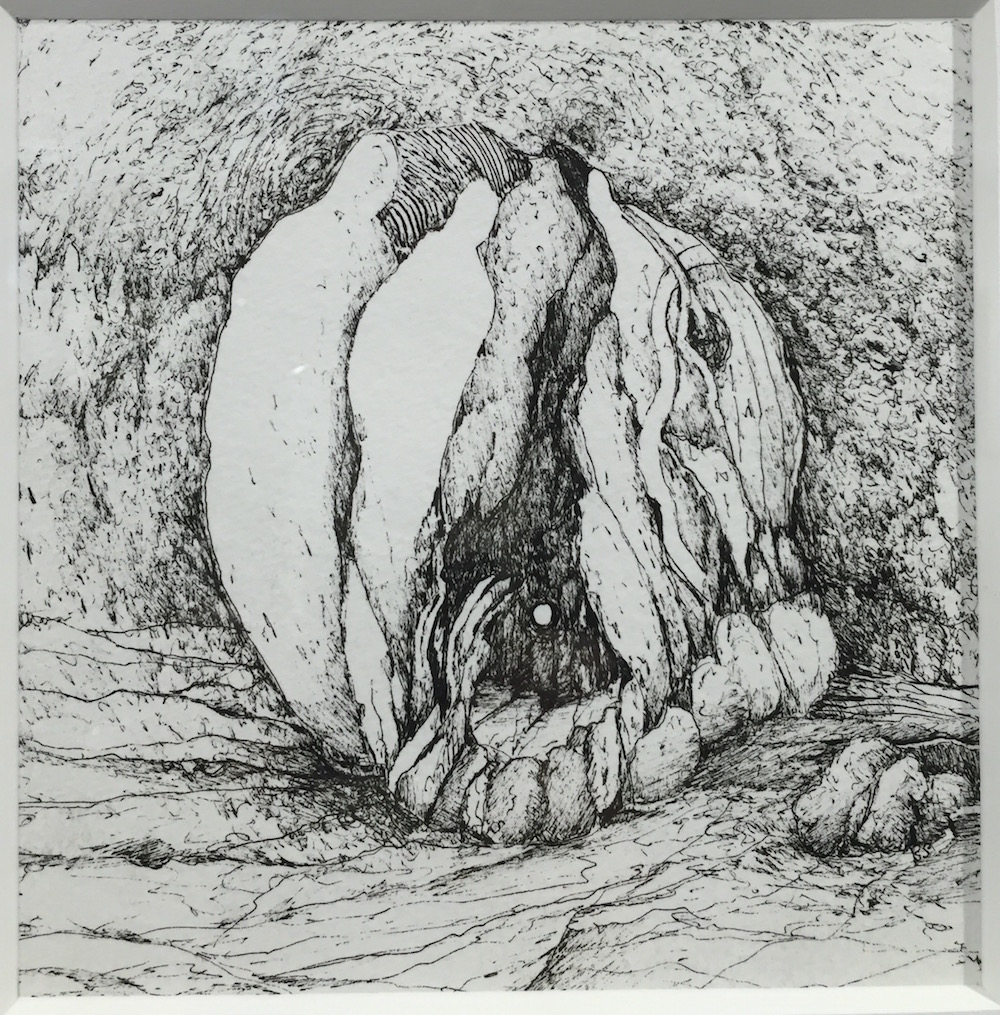
The Creation, Bill Stephens
A fascinating new invitational group show is up at Oxford, on the theme of myths. I got an early look at some of the work while it was going up last week, on a visit with Bill Santelli and Bill Stephens. A wide range of media and subjects, some distinct interpretations of familiar myths, others tangentially related to a broader definition of mythology. The opening on Saturday evening should be fun.
May 2nd, 2016 by dave dorsey

Simone Weil
Two quotes from Gravity and Grace, one specifically about art, the other not, but just as applicable to the making of art:
It is an act of cowardice to seek from (or to wish to give) the people we love any other consolation than that which works of art give us. These help us through the mere fact that they exist. To love and to be loved only serves mutually to render this existence more concrete, more constantly present to the mind.
With all things, it is always what comes to us from outside, freely and by surprise as a gift, without our having sought it, that brings us pure joy. In the same way real good can only come from outside ourselves, never from our own effort. We cannot under any circumstances manufacture something which is better than ourselves. Thus effort stretched towards goodness cannot reach its goal; it is after long, fruitless effort which ends in despair, when we no longer expect anything, that, from outside ourselves, the gift comes as a marvelous surprise.









